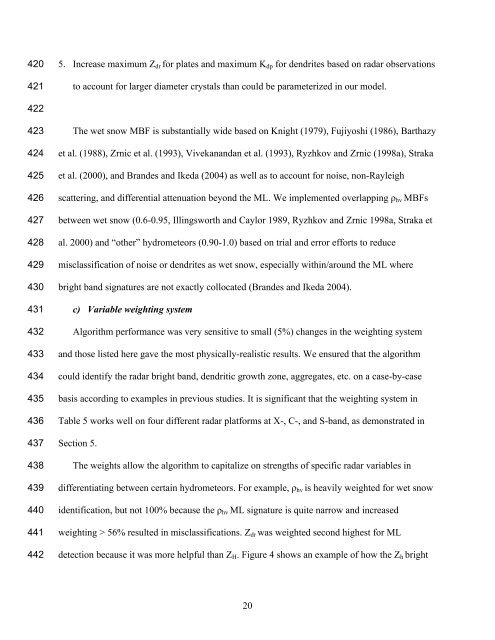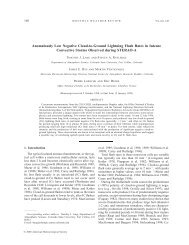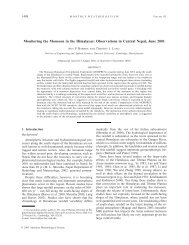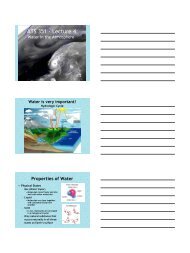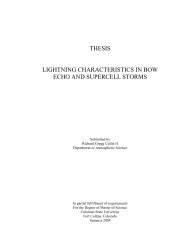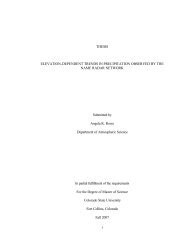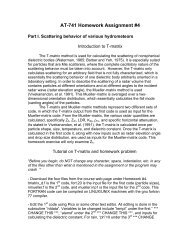1 A dual-polarization radar hydrometeor classification algorithm for ...
1 A dual-polarization radar hydrometeor classification algorithm for ...
1 A dual-polarization radar hydrometeor classification algorithm for ...
Create successful ePaper yourself
Turn your PDF publications into a flip-book with our unique Google optimized e-Paper software.
4204215. Increase maximum Z dr <strong>for</strong> plates and maximum K dp <strong>for</strong> dendrites based on <strong>radar</strong> observationsto account <strong>for</strong> larger diameter crystals than could be parameterized in our model.422423424425426427428429430431432433434435436437438439440441442The wet snow MBF is substantially wide based on Knight (1979), Fujiyoshi (1986), Barthazyet al. (1988), Zrnic et al. (1993), Vivekanandan et al. (1993), Ryzhkov and Zrnic (1998a), Strakaet al. (2000), and Brandes and Ikeda (2004) as well as to account <strong>for</strong> noise, non-Rayleighscattering, and differential attenuation beyond the ML. We implemented overlapping ! hv MBFsbetween wet snow (0.6-0.95, Illingsworth and Caylor 1989, Ryzhkov and Zrnic 1998a, Straka etal. 2000) and “other” <strong>hydrometeor</strong>s (0.90-1.0) based on trial and error ef<strong>for</strong>ts to reducemis<strong>classification</strong> of noise or dendrites as wet snow, especially within/around the ML wherebright band signatures are not exactly collocated (Brandes and Ikeda 2004).c) Variable weighting systemAlgorithm per<strong>for</strong>mance was very sensitive to small (5%) changes in the weighting systemand those listed here gave the most physically-realistic results. We ensured that the <strong>algorithm</strong>could identify the <strong>radar</strong> bright band, dendritic growth zone, aggregates, etc. on a case-by-casebasis according to examples in previous studies. It is significant that the weighting system inTable 5 works well on four different <strong>radar</strong> plat<strong>for</strong>ms at X-, C-, and S-band, as demonstrated inSection 5.The weights allow the <strong>algorithm</strong> to capitalize on strengths of specific <strong>radar</strong> variables indifferentiating between certain <strong>hydrometeor</strong>s. For example, ! hv is heavily weighted <strong>for</strong> wet snowidentification, but not 100% because the ! hv ML signature is quite narrow and increasedweighting > 56% resulted in mis<strong>classification</strong>s. Z dr was weighted second highest <strong>for</strong> MLdetection because it was more helpful than Z H . Figure 4 shows an example of how the Z h bright20


